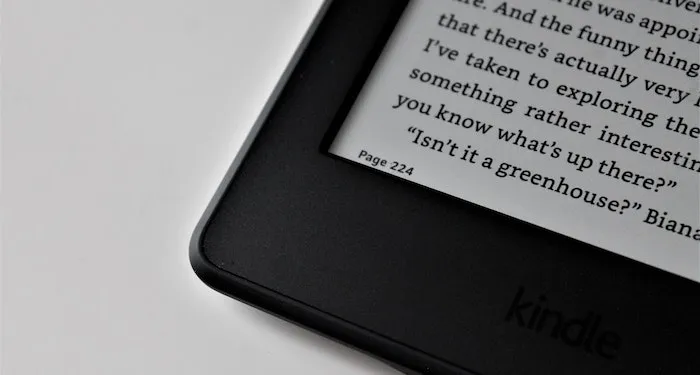
Who Can Get Your Book Grades Accessibility in the Age of Exclusives, Restrictive Licensing
In an era when book accessibility seems to be greater than ever, is that perception or reality? This is the question at the heart of Fight For The Future‘s latest project, Who Can Get Your Book.
Fight For The Future is a group of technology experts, policy makers, and creatives who work to use the power of the internet for good and to ensure it remains a tool for all to use equitably. This latest project emerges as a direct result of highlighting disparities when it comes to inequalities in digital publishing and specifically, how public schools and libraries, independent booksellers, rural, disabled, and low-income readers are being further pulled away from the future of our digital reality.
Who Can Get Your Book assigns a letter grade for accessibility and availability of books. It looks at how many formats in which the book is available and what types of licensing or exclusive agreements are attached to those formats.
Each book entered into Who Can Get Your Book is given one point for each equitable decision made about it — a book earns the most points if it’s available in print, audio, and ebook without licensing agreements, embargoes, or exclusives, such as being available only via Amazon’s Audible platform or an Amazon Original digital title. Born a Crime, the popular memoir by Trevor Noah, for example, earns a D grade because the book isn’t available outside its exclusive deal with Audible and because of restrictive licensing agreements for the ebook.
“With the rise of ebooks and audiobooks, barriers that prevented blind people like myself from gaining equitable access to books could be a thing of the past,” said Sina Bahram (he/him), President of Prime Access Consulting, Inc. “Instead, the education, research, and enjoyment of disabled people are all caught in the crossfire of publishing profits. I hope that this project will prompt authors and publishers to center people with reading differences as well as people with income and transportation barriers. Disabled readers must be included in publishing’s digital revolution.”
It’s not just the average reader for whom accessibility is vital. It’s also those working in or accessing materials via public schools or libraries. Embargoes, exclusives, and restrictive licensing put these institutions at a distinct disadvantage, charging outrageous sums for limited use of materials.
As reported in December, one school district in southern California finds itself budgeting $27 per student every 12 months to access the classic and widely-taught The Diary of Anne Frank annually.
“I hope that authors and publishers will consider the ramifications of their decisions to limit access and what that means,” said Chrystal Woodcock (she/her), Library Media Supervisor at Menifee Union School District in California, who shared the above information. “My biggest fear is that the idea of ownership will go away in the same ways it has within the software industry. A shift away from print books and to these limited-use licenses could be the end of libraries. Libraries are a great equalizer that give learning opportunities to people of all socio-economic backgrounds. We do need to continue to fight for access.”
Not only do readers stand to benefit from more accessibility. So do authors. In 2020, a year with record library ebook lending — up 33% — publishing saw an increase in sales by 8%, as well as a 16-22% increase in ebook sales. Despite that, independent bookstores saw sales decrease in that same time frame by 28%.
A big reason? Exclusivity.
“Bookstores are the heart and soul of our communities,” said Mark Pearson (he/him), Co-Founder and CEO of audiobook platform Libro.fm, which shares its profits with independent bookstores. “[S]ales of digital audiobooks through Libro.fm’s partner stores had a dramatic increase from 2020. We are optimistic about the long-term potential for bookstores to compete online in all formats. At the same time, Audible Exclusive audiobooks—also known as Audible Originals— hurt bookstores because they are consistently missing out on sales for big releases. When they aren’t able to sell audiobooks that are in high demand, potential customers will opt for Audible over their local bookstores.”
As more authors sign on to Amazon exclusives, accessibility to those projects decreases. Who Can Get Your Book hopes to highlight these disparities and force the hand of decision makers to think more broadly about access for readers.
“With a basis for comparison in this tool, we can now confront the true impact of an embargo or an exclusive on the institutions that have created and sustained generations of book lovers,” said Lia Holland (she/they), Campaigns & Communications Director with Fight for the Future. “What grades would last year’s top 10 bestsellers get? What about top LGBTQ+ or racial justice books? Which publishers are making the most equitable choices with their new releases? The results are heartbreaking.”
“The US has come to a place where conspiracy theories and disinformation are free online, whereas real human knowledge is only for those who can pay. Publishing’s ecosystem has become incredibly complicated, obscuring who is being most harmed by the dog-eat-dog war between monopolistic Amazon and the few remaining large publishers. Those most harmed are disabled people, rural people, low income people, those who speak English as a second language, and young readers. This tool empowers all of us to finally recognize what is going on, and demand better,” Holland concluded.









